Acer Updates The Compact Juggernaut: Predator Orion 3000 Hands-On
by Brett Howse on June 23, 2020 9:45 AM EST
Today at the Next@Acer conference, Acer is announcing an updated version of their compact gaming desktop, the Predator Orion 3000, and the company was able to send us a pre-production unit for a hands-on. As this is a pre-production unit, final performance is not yet fine-tuned, but we can go over the new chassis design, as well as the internals of this mid-sized tower PC.
| Acer Predator Desktop | |||||
| Orion 3000 | |||||
| CPU | 10th Generation Intel Core i5 Processor 10th Generation Intel Core i7 Processor |
||||
| GPU | NVIDIA GeForce GTX Options: GTX 1650 GTX 1660 NVIDIA RTX Options: RTX 2060 RTX 2060 Super RTX 2070 Super |
||||
| RAM | Up to 64 GB DDR4-2666 | ||||
| Storage | PCIe NVMe Options: 128 GB / 256 GB / 512 GB / 1 TB M.2 2280 2 x 3.5-inch SATA bays Up to 2 x 3 TB HDD |
||||
| Networking | Killer E2600 Gigabit Ethernet Wi-Fi 6 Bluetooth 5.1 |
||||
| Cooling | Dual Predator Frostblade RGB fans | ||||
| I/O - Rear | 4 x USB 3.2 2 x USB 2.0 3.5 mm audio |
||||
| I/O - Front | 1 x USB Type-A 1 x USB Type-C 3.5mm audio |
||||
| Dimensions | 15.4 x 6.8 x 15.2 inches (HxWxD) | ||||
| Starting Price | $999.99 | ||||
| Availability | September 2020 | ||||
Acer’s updated Orion 3000 chassis is a well-thought out design, with some excellent features, and a compact and stylish design that would fit well on any gaming desk. Acer offers the Orion 3000 with a black perforated side panel, or you can opt for an EMI compliant tempered glass side if you want to check out the RGB-lit interior. At 18 Liters, the Orion 3000 is also surprisingly compact considering the powerful components inside.
Keeping everything cool are two Predator “Frostblade” fans, with 16.7 million colors to choose from in the PredatorSense App. The RGB also continues with two accent lights along the front of the case, and with or without the clear side panel, the lighting is plenty to create a glow around the system. Powering up the system was impressive, not only because of the random RGB color scheme, but also because the Frostblade fans were tuned for a very low noise level. The system, even as a pre-production sample, was nearly silent at idle.
The Orion 3000 isn’t just about style though. Acer has some wonderful functional elements to their design as well. The top of the case houses a built-in carrying handle, which makes the small desktop very easy to move around, and although I am not sure if Acer came up with the idea of including a headset holder built into the chassis, but it’s a brilliant idea and one I wish my own case offered. The power button is very prominent and easy to access, and for the new design Acer has moved the front panel ports behind a small door to keep them concealed when not in use. Whether or not you’d like them behind a door probably depends on how often you use them, but the door looks like it could be removed without too much effort.
As this is a pre-production unit, the cable management will likely be adjusted somewhat in the next couple of months, but even so it did not impede airflow at all.
The case has room for two 3.5-inch SATA drives, as well as an NVMe slot for the built-in storage, of which Acer is offering up to 1 TB for the boot drive. The system will have a single PCIe x16 slot for the GPU, so any expansion will have to be over USB. There’s onboard Gigabit Ethernet and Wi-Fi 6 to cover any networking needs.
Acer will be offering a wide-range of performance, with Core i5 and Core i7 models, and up to 64 GB of DDR4-2666 memory. On the GPU front, Acer is offering the NVIDIA GeForce GTX 1650 and 1660, and RTX 2060, 2060 Super, and 2070 Super options. The sample we were provided featured a 500-Watt power supply, which should be plenty to handle everything Acer is offering.
The redesigned Predator Orion 3000 will be available in September, starting at $999.99 USD.


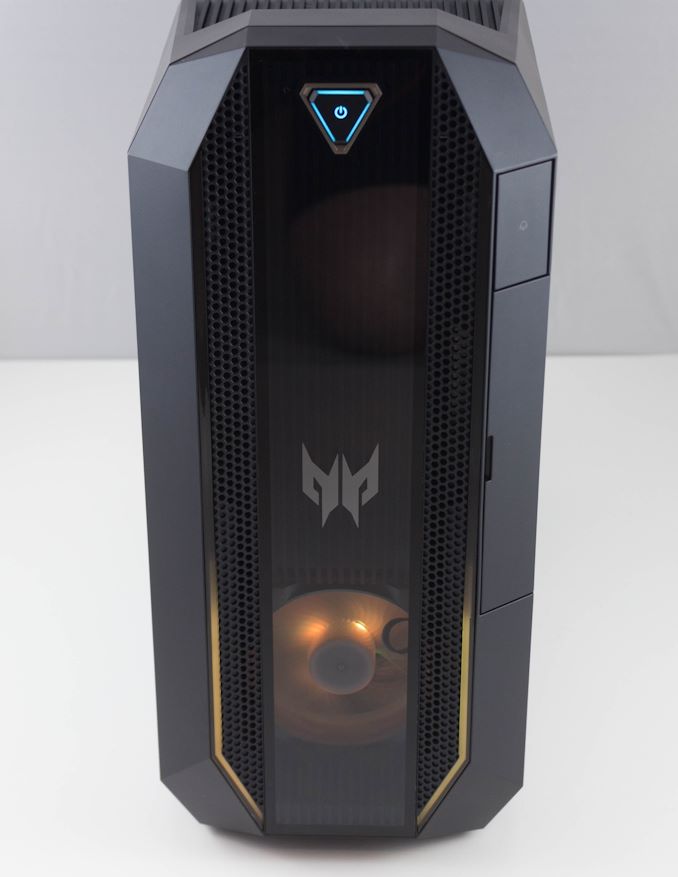
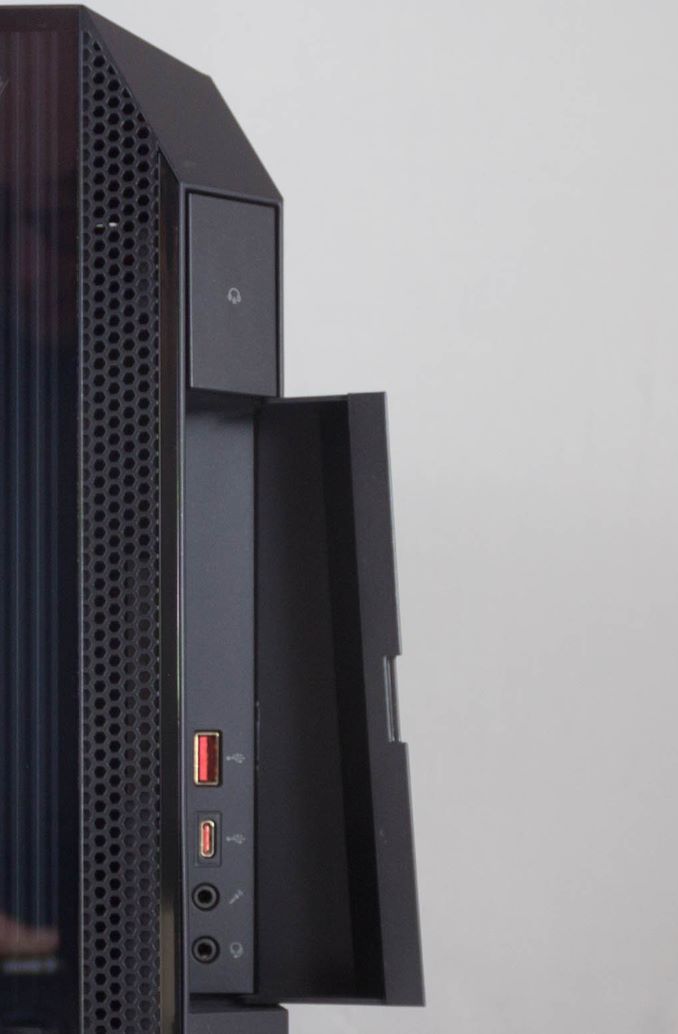
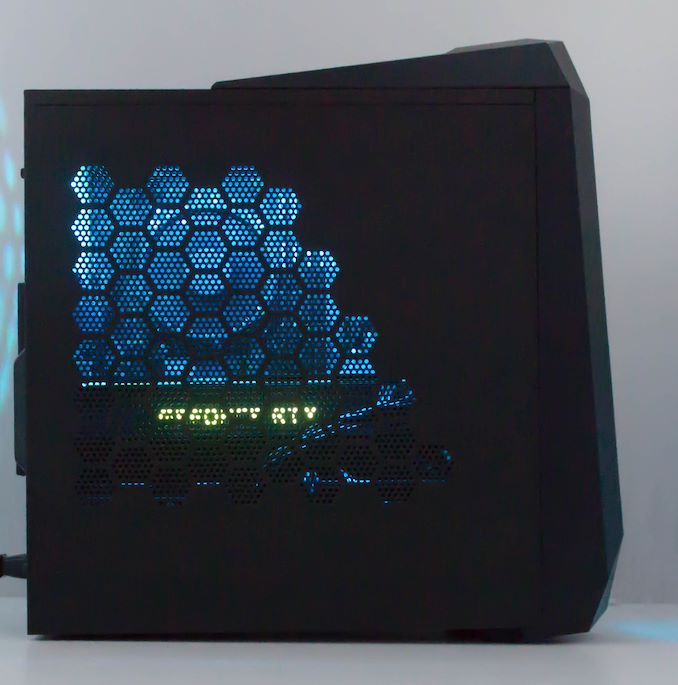
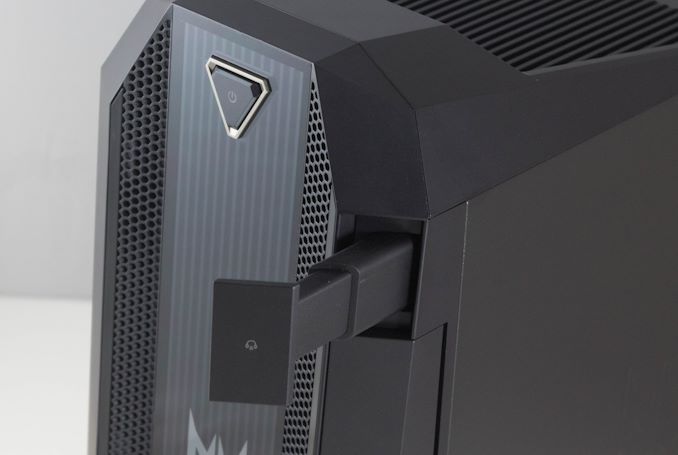

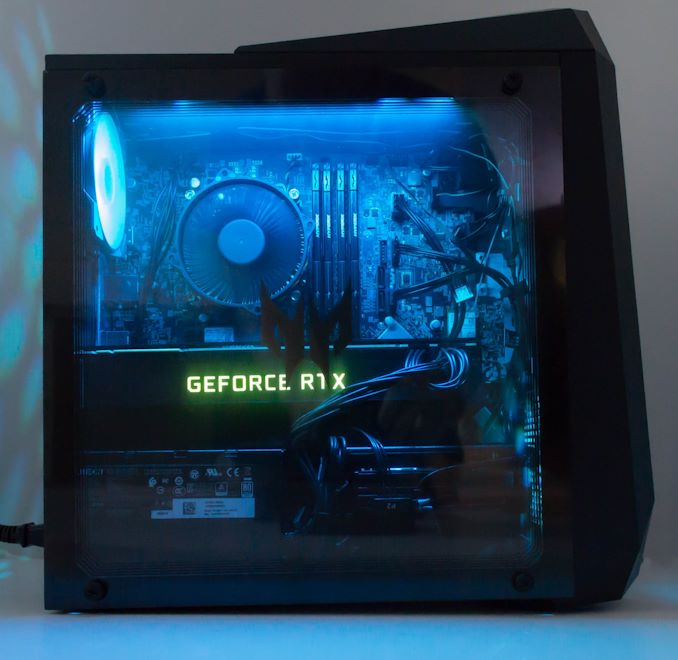








34 Comments
View All Comments
hanselltc - Wednesday, June 24, 2020 - link
Even for Intel chips, these are i5's and i7's, and latter without intel's raised 2933 rated memory clocks. Not much of a juggernaut indeed.Valantar - Wednesday, June 24, 2020 - link
At least it's a hot potato ;)YB1064 - Wednesday, June 24, 2020 - link
Totally agree! Back to the P4 days.Duncan Macdonald - Tuesday, June 23, 2020 - link
As it is a compact case - how noisy does it get at full load. When you get a unit to test please measure the noise level at full load. One other question - can the lighting be turned off as bright lights near the monitor are distracting.just6979 - Tuesday, June 23, 2020 - link
The 3.5" inch drive is in backwards. The ports should be on the other end so the cables don't have to cross the case and airflow.Can't really call it a "juggernaut" without a top 3 or even top 4 GPU in it: should really have at least a 2080 Super to earn that name.
Mentawl - Tuesday, June 23, 2020 - link
I would guess the panel behind the motherboard is fixed - none of the cables are routed behind the motherboard tray, by the looks of things. Can't hook up the drive the other way round if that panel is fixed.Deicidium369 - Tuesday, June 23, 2020 - link
Is there a teen titan version of juggernaut? surely can't mean the full size juggernautPeachNCream - Tuesday, June 23, 2020 - link
Looks like an OEM Intel cooler on the CPU. Probably won't end up in the final design though. I'm not sure how much value there is in discussing it now since we are not looking at a production unit so a lot can change before this lands in retail. Hopefully they will reconsider the network adapter and maybe drop in non-Killer hardware. Maybe Intel will rescue that brand identity, but it at this point the acquisition is too recent for any hope of improvement to have trickled into the retail channels yet.brucethemoose - Tuesday, June 23, 2020 - link
2466 max? Reeeeeeeeeeee!Also, is this really compact? Thats full height, full length... when I picture "compact" I think of a crammed Silveratone SG10, or a case with a horizontal GPU mount, or one of those Zotac mini boxes.
DanNeely - Tuesday, June 23, 2020 - link
Compared to a full ATX case it's probably about 4-6" shorter (no additional expansion slots, and no room up top for a radiator, with the latter partially countered by the top mounted plastic up front); and even with the massive bling/intake thing on the front a few smaller front to back than a conventional ATX case with front mounted drive bays.Ignoring the bulging top/front piece it's in the same ballpark size wise as a conventional layout ITX case with a 3.5" cage in the front. You can build smaller, by giving up 3.5" drive support, full length GPU support, and larger CPU cooler support; but it's still smaller than most mATX/ATX setups.
I'm limiting my facepalm to having enough room for a decent tower cooler but appearing to use a crappy intel retail box model; or other low profile model that will limit turbo levels.